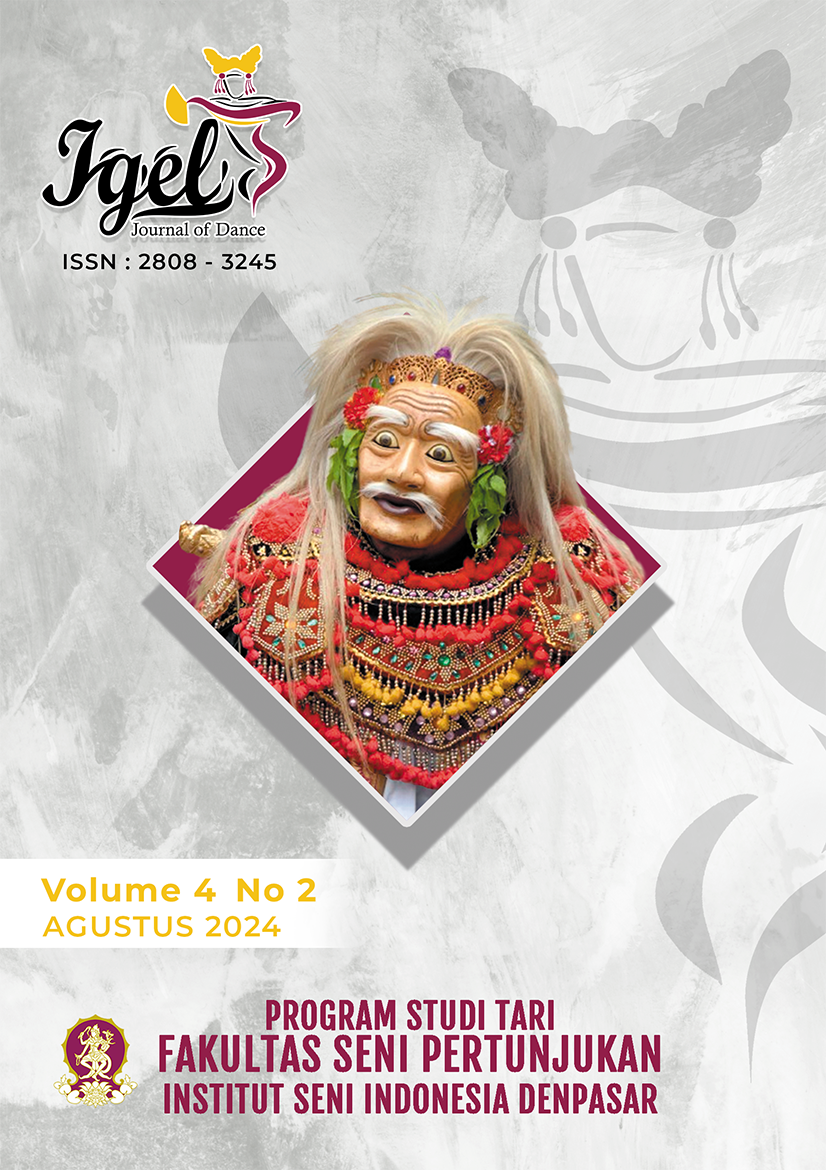Karya Tari Ngarepat: Sumber ide dan konsep Rejang Kapat di Desa Timbrah, Kabupaten Karangasem.
DOI:
https://doi.org/10.59997/jijod.v4i2.3209Keywords:
Ngarepat, Sasih Kapat, Kelian DahaAbstract
This Ngarepat Dance work comes from rejang kapat in Timbrah Village, Karangasem Regency. One of the aims of the Ngarepat Dance work was created to educate the wider community about the processions or ceremonial rituals carried out by prospective kelihan dahe before becoming kelihan dahe. The kelihan dahe rejang kapat is a symbol of the four dedari, Dewe Dedari Agung, Dewe Dedari Suci, Dewe Dedari Kendran, Dewe Dedari Tohok. So it gets the title Ngarepat. Taken from two words ngarep which means foremost, Utama: he is the father. And Pat which means the word number four which refers to the word kapat which means the fourth Balinese month. To produce maximum work, assistance from supervisors and partners is needed. The partner chosen is Sanggar Paripurna, Sanggar Paripurna can provide shelter and guidance in the process of creating this dance work. The method used in this creation process is Angripta Sesolahan by I Kt. Suteja, in the book there are six methods for creating a work, namely planning, nuasen, makalin, lesin, ngebah and presentation. From this process, a form and form of work is produced, Ngarepat consists of 6 (six) female dancers, the make-up used is minimalist, the dress code uses wastra or cloth with the dominant color white as a symbol of purification and MIDI (musical instrument digital interface) music. . This work also gives rise to several novelties, one of which is the novelty of the movements obtained by the creator, such as the kapat movement, agem ngarepat and ngeyeg. The creator hopes that this work can be useful for the general public.
References
Bandem, I Made dan Fredik E. DeBoer, (2004), Kaja dan Kelod Tarian Bali dalam Tradisi, Terj. I Made Marlowe Makaradhwaja Bandem, Yogyakarta: Institut Seni Indonesia Yogyakarta
Dibia, (2020), Ngunda Bayu Teknik Pengolahan Tenaga Dalam Seni Pertunjukan Bali, Denpasar, Geria Olah Kreativitas Seni (GEOKS)
_________ (2013), Puspasari Seni Tari Bali, Denpasar: UPT Penerbitan ISI Denpasar
Djelantik, A. A. M, (1999), Estetika: Sebuah Pengantar, MSPI dan Arti, Bandung
__________(1990), Pengantar Dasar Estetika Jilid I: Estetika Instrumental, STSI Denpasar, Denpasar
_________ (2004), Estetika: Sebuah Pengantar, MSPI dan Arti, Bandung
Maryono, (2012), Analisa Tari, ISI Press Solo, Solo
Meri, La, (1986), Dance Composition, the Basic Elements yang diterjemahkan oleh Soedarsono, Lagaligo
Padmodarmaya, Permana, (1989), Tata Teknik Pentas, Balai Pustaka. Jakarta
Sulistyowati, (2005), Kamus Lengkap Bahasa Indonesia, CV. Bhuana Raya, Jakarta
Suteja, I Kt, (2018), Catur Asrama Pendakian Spiritual Masyarakat Bali dalam Sebuah Karya Tari, Paramita, Denpasar
Trisnawati, Ida Ayu, (2018), Pengantar Sejarah Tari, Fakultas Seni Pertunjukan Institut Seni Indonesia Denpasar
Warna, I Wayan, (1978), Kamus Bali – Indonesia, Dinas Pengajaran Provinsi Bali, Denpasar
Additional Files
Published
Issue
Section
License
Copyright (c) 2024 Ni Luh Dipasatyadewi

This work is licensed under a Creative Commons Attribution-NonCommercial-ShareAlike 4.0 International License.
Volume 2 Nomor 1, Juni 2022








